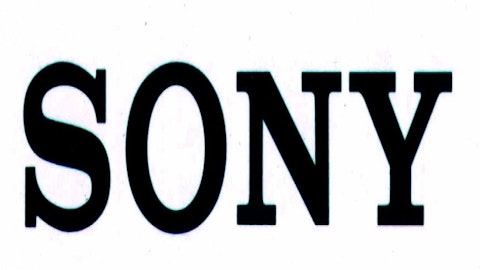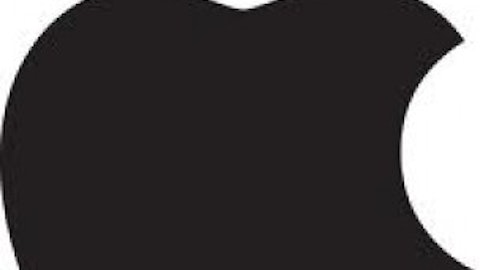It’s only been a week since E3, and Microsoft’s DRM approach for Xbox One has utterly collapsed under the pressure of angry gamers everywhere. Yesterday Microsoft Corporation (NASDAQ:MSFT) announced a policy that essentially mirrors that of its rival in the coming next-gen console wars, Sony Corporation (ADR) (NYSE:SNE).
DRM backlash
In the announcement, Microsoft Corporation (NASDAQ:MSFT) reversed all the essential elements of the DRM system it had intended to impose with Xbox One (XB1). Gone is the requirement to be always connected to the Internet, or check in with Microsoft once a day. Any disk-based single player game will be playable offline after installation, although the disc will need to be in the tray. Also gone are the new limitations on used games. Sharing, lending, or giving disc-based games will work as it does on Xbox 360.
The speed with which Microsoft Corporation (NASDAQ:MSFT) caved on DRM has been truly breathtaking. I really didn’t expect it to come before Sony Corporation (ADR) (NYSE:SNE)‘s PS4 and the XB1 had an opportunity to go toe-to-toe in the market place, and that wasn’t going to happen before the end of the year, since Sony had announced a late December release.
Apparently Microsoft Corporation (NASDAQ:MSFT) read some of the polls I mentioned in my last post on the subject, “Sony and Microsoft Battle for Hearts and Minds at E3.” The response to Microsoft’s DRM approach was resoundingly negative, and continuing to pursue it would have set Microsoft up for a flop of epic proportions.
As it is, Microsoft Corporation (NASDAQ:MSFT) still has an uphill battle to win over prospective console consumers. XB1 still has a higher price tag ($499 compared to $399 for the PS4), as well as the burden of the Kinect sensor, which so many gamers loathe. Well, maybe it is a little creepy having a live, Internet-connected camera staring at you full time when you’re in front of the TV.
Here, Microsoft’s best option might be to allow users to substitute some other control device for the Kinect. The XB1’s Windows 8 based OS needs some form of gesture recognition for things like swiping between screens, but it’s possible that the game controller could stand in for these functions. I wouldn’t be surprised if a Kinect-less option for the XB1 appears before the end of the year.
Xbox One DRM and Kinect have been the major complaints about XB1, but by no means the only ones. Most people find the XB1 bulky and unattractive compared to the PS4. And then there are the skeptics who believe that both the Sony and Microsoft consoles will be junk compared to PC gaming platforms.
The skeptics are right that the consoles won’t perform as well as a PC with a high end graphics card. What the skeptics don’t understand is that the consoles don’t need to. What the consoles need to do is provide sufficient HD TV frame rates for responsive gaming, typically about 30 – 60 Hz. Based on the demos at E3, this is exactly what the consoles will provide.
The intensity of the consumer response and Microsoft’s reaction demonstrates how high the stakes are for both Sony and Microsoft. For instance, in 2012 Q4 Microsoft introduced the Surface RT as well as the Windows Phone 8 mobile operating system. In that quarter 900,000 Surface RT devices were sold (according to IDC) and 6.2 million Windows Phones were sold (according to Gartner). In Q4 of this year, Microsoft will sell about 5 million XB1 consoles, as a conservative estimate, and possibly more if Microsoft does a good job of addressing remaining consumer concerns about the device, since Sony won’t be in the market until the end of the year.
The big losers
Microsoft’s DRM reversal is a big win for console consumers, but a big loss for game developers. Here I’ll frankly admit to some bias in favor of the developers. But beyond personal sympathy, the game software industry has been in the doldrums, as the chart of revenue and earnings for the two major game developers, Activision Blizzard, Inc. (NASDAQ:ATVI) and Electronic Arts Inc. (NASDAQ:EA), shows below.

Based on the interest level in the new consoles, I expect about a 10% year over year uptick in game software revenues in Q1 of the new year, but Microsoft’s DRM approach, if it had become a standard for both new consoles, would have ensured greater near term growth for the developers. Since Microsoft maintains its own game development group within the Entertainment and Devices division, Microsoft was naturally sympathetic to their desire to curtail the trade in used games, from which they derive no additional revenue.
Not that gamers didn’t have the legal right to buy, sell, or trade used games. Copyright law in the U.S. has a long established “right of first sale” that allows consumers to resell copyrighted works such as used books, CDs, or videos that have been legitimately purchased. Software companies and digital content providers have been nibbling away at this right for years, especially for digitally downloaded content. In this area Microsoft held fast to its existing policy of not allowing trading, reselling or loaning of downloaded games.
In the long term (2-5 years), I’m not sure that the DRM issue really matters. The entire software industry is moving to digital delivery, and the convenience of digital delivery inevitably comes with DRM strings attached. Game consumers have at most a temporary (2-5 year) reprieve from this, since the Internet is still a little slow in some places for downloading 25 – 50 GB of game content, the capacity of a Blu-ray disc. But eventually, the game software industry will migrate fully to Internet delivery, since it’s the most cost effective way to distribute software.
Mark Hibben has no position in any stocks mentioned. The Motley Fool owns shares of Microsoft.
The article Microsoft Does an Xbox One – Eighty originally appeared on Fool.com and is written by Mark Hibben.
Mark is a member of The Motley Fool Blog Network — entries represent the personal opinion of the blogger and are not formally edited.
Copyright © 1995 – 2013 The Motley Fool, LLC. All rights reserved. The Motley Fool has a disclosure policy.






